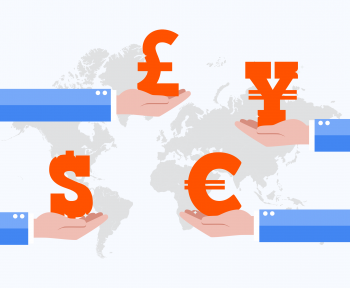Payment for a product or service, or even in its complimentary form has always been hassle-free, even in antiquity, subject to developments all the time, optimizing the process for a more streamlined, accountable and secure version every step of the way. However as borders became a part of human civilization, things got a little complicated. And, even more over time, to be honest. Because this time modes of payment were subject to change, or currencies later on, the traditions, charges, taxes, everything that could be a part of a deal came out as an issue when commerce started crossing borders.
To add even more complexity to what was already had, business-to-business or, in shorter terms, B2B cross border payments were inevitably discovered as not all good and services could be found within borders of each country but they still had to be acquired somehow to push through a process of added value to offer to the end users. The different financial structures that a trade deal involves introduces new challenges to be overcome in the fastest and most cost-efficient way possible. In spite of the obvious needs the sector is starving at, the few readily available options require to be populated more while some of these should already be made obsolete because of their ridiculous inefficiency.
What are the Best Cross Border Payments for B2B?
While it is looking to break the 35 trillion USD barrier next year, B2B payments still rely heavily on bank transfers, for example, which is sluggish in its most optimistic terms that also incurs lots of additional charges and taxes as there are many parties involved before the transfer is complete.
If we would take a closer look at B2B cross border payment solutions, for mostly “historical” reasons, we would mention cheques. These physical forms of payment quite prone to frauds need to arrive before they could be ordered to be processed by the bank involved. Only after all these time- and nerve-consuming stages, could the money be paid off to the vendor. Honestly, the list needed to be comprehensive enough, at least at the basics and that is why cheques have been mentioned. We also have Global ACH payments that work through facilities named Automated Clearing Houses, hence the abbreviation, which is designed to handle a hefty number of transactions with speed. Speed is relative and it is about three days for clearance. Still, being mostly domestic as well as having to be physical premises, constrict their use as a cross border payments medium by a huge margin.
Wire transfers are still considered a “good old” choice, however we are not really sure if it merits the first qualification anymore. As aforementioned, despite it being an established one thanks to the banking system covering the whole globe, the amount of time and rigor before a payment is cleared cries for its disposal as soon as possible. Meanwhile, credit cards have been businesses’ friend as well – they can be utilized to transfer B2B payments overseas the only caveat being a somewhat concerning one: the cost that goes up as currencies need to be covered and more mediums get involved which drives the cost even higher.
B2B cross border payment solutions are no less crucial as the world spins around the internet faster. That is why more businesses day after day are opting for solutions that work over the web. eWallets are the first to pop up in our minds as means to commit B2B payments like PayPal, Neteller, Alipay etc. There are even fintech companies specialized at such transfers being made without extravagant costs and time consumption. Cryptocurrency projects are hailed for their impeccable speed to transfer cross border payments worldwide such as Ripple which literally sent ripples of excitement all over the globe. It has even been adopted by some banks and we would not be one bit surprised to see that the next decade would see bank wires or even SWIFT being left out in the cold should they fail to adapt to cater the new gen needs of B2B cross border payments.



